
American Ballet Theatre
Firebird, Thirteen Diversions, Apollo
New York, Metropolitan Opera House
11, 13 June 2012
www.abt.org
Sometimes the second time is the charm. This seems to be especially true when it comes to new ballets by Alexei Ratmansky. Often, they’re not easy to take in on first viewing, indigestible as an over-rich meal. But then, something in us changes, our eye evolves. On second thought, it occurs to us, maybe this big, blurry mess is not so blurry after all. It happened with “Namouna,” which he made for New York City Ballet in 2010, and, to a certain extent, with his “Nutcracker” for American Ballet Theatre later that year. And it’s certainly true for his new “Firebird,” premiering this week at ABT.
In part, like so many things, it’s George Balanchine’s fault. With his impeccable, airy style he conditioned us – the American ballet audience – to expect clarity, clarity, clarity. If there’s one adjective I would apply to Balanchine’s ballets, that’s it: clarity. It’s the ever-present principle behind the black-and-white ballets. Nothing gets in the way of the eye, not even costumes. Nothing matters but the steps (and the music, of course). But of course he inherited the idea from Petipa – all those clean lines, the pristine geometries, the gleaming architecture.
I get the feeling Ratmansky is not really interested in clarity, though he’s capable of it, as he has shown in “Russian Seasons,” “Concerto DSCH,” and, especially, “Seven Sonatas,” his most limpid creation (made for ABT in 2009). But his style, especially in the big story ballets he’s been doing recently (“Nutcracker,” “Little Humpbacked Horse,” “Anna Karenina”) is increasingly layered, messy, maelstrom-like, down to the sets and costumes. How many times have we seen him place a line of dancers at the front of the stage, while other dancers perform something behind them that we must strain to see? And his pas de deux? Almost never do they simply go from A to B with a clean structure and line. Instead, they ebb and flow as one step melts into the next and one emotion replaces another. He’s not especially interested in clean dancing either; whether he’s choreographing for groups or soloists (or partners), the struggle and the individual shaping of the movement is part of the story. He makes steps that incorporate risk and rapid switches in direction and momentum. Unlike most ballet steps they don’t hide gravity: jumps with kicks or turns in the air, off-balance swoons that fall into bent-leg positions that quickly propel themselves in an unexpected direction. They require effort – and they don’t conceal the fact. These are steps that simply cannot be performed uniformly by more than one dancer. And, because he packs more steps into a phrase than one expects him to, the choreography can look un-musical. This bothers people, and I can see why.
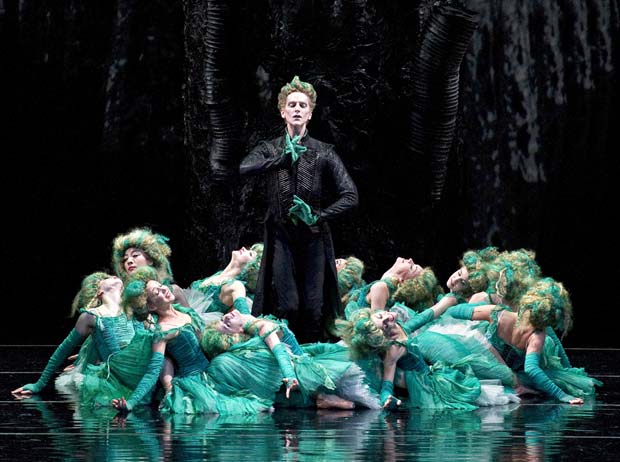
But what I find is that the more one sees these ballets, the more the initial discomfort gives way to a kind of pleasure and fascination. First of all, his dancers never go through the motions; they are completely focused and present in what they’re doing. They are working very, very hard, sweating like crazy, getting tired. Secondly, there is little opportunity for fakery – the kind of put-on grandiosity one sees in such dances as Cranko’s “Onegin” – or for showy bravura, of the kind that ballet audiences often look for: how many fouetté turns did she do? How high were those cabrioles? No, the virtuosity Ratmansky asks for is awkward, risky, even ugly. And third, it’s engaging to the eye and the mind – so much is going on, and the steps and gestures are deeply connected to his ideas, about character, about story, about movement. And he has so many ideas; the richness of his imagination is astounding.
“Firebird” is perhaps the most extreme case of this I’ve seen. For someone familiar with the Fokine and Balanchine versions, this one comes as quite a shock, though the story has barely been changed at all. Still, the emphasis and overall musicality of the piece feels completely different. Gone is the elegiac feel, the sensual exoticism, the longing for a pure Russian ideal: the restoration of order, the almost religious innocence and spiritual union. Ratmansky uses Stravinsky’s whole ballet score, not the Suite, which is what Balanchine used (and which I have read that Stravinsky actually preferred). There’s a lot of music – the ballet is almost an hour long. The designs, by Simon Pastukh (who also worked on “On the Dnieper”) are haunting, weird, almost post-apocalyptic. One could call them ugly. First, we see a gray cement cell with a wall that fills the entire proscenium, and a dark doorway. Then, for most of the ballet, the stage is framed by five monumental, barren tree trunks with tube-like protuberances topped with glowing flames – they even emit puffs of smoke. A toxic waste site comes to mind. The trees are augmented by projections (by Wendall Harrington) that create cathedral-like perspectives and washes of color. (For the most part, I found the projections enhanced the scenery without being distracting; at the end, in a real coup de thèâtre, they made it seem as if the trees were melting, replaced by a gaudy, somewhat creepy twilight.) The costumes (by Galina Solovyeva, who is married to Pastukh) are outlandish – except for Ivan’s, which consists of a very flattering white Russian-style jacket, trousers, and boots. But the maidens are weird goblin-like characters in frizzy wigs and shredded, gauzy skirts. They look like Marie Antoinette on the way to the Guillotine, except they’re green! And the Firebirds – there is a flock of them – wear red unitards with full, shredded tails and enormous headpieces with multiple peaks. Kaschei, the mega-villain, is dressed in a gleaming floor-length black tailcoat, with green highlights in his hair and green gloves. Elegant, it’s not. Cartoonish? In a way, if only cartoons were like strange, colorful nightmares.
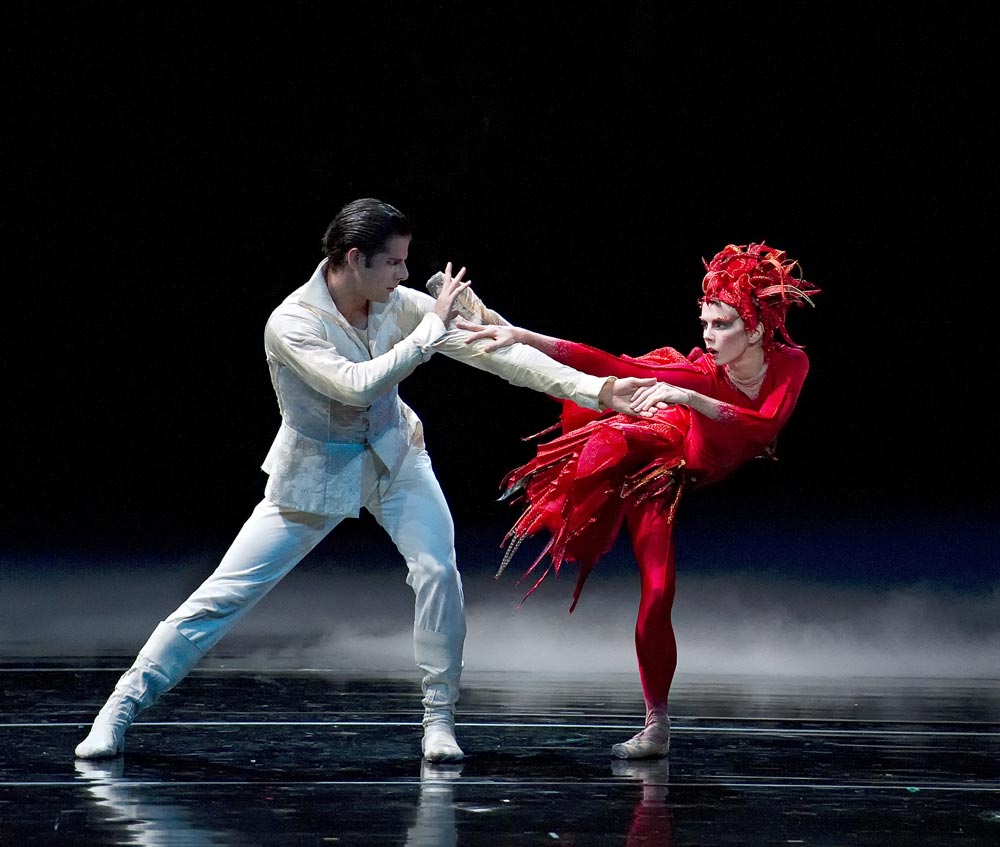
Ratmansky introduces the Firebird as part of a flock, as he did in “Humpbacked Horse.” It’s true, it takes away from the main Firebird’s singularity, her magical uniqueness. But I’ll admit I love the jerky movements he gives the birds, diving leaps that arc up and down rather than fly forward. On opening night (June 11) Natalia Osipova’s Firebird was notable mainly for her whipping jumps, twisting in midair, and her lightness. She seems to go in all directions at once. But Isabella Boylston, at the June 13 matinée, was even more captivating, with more weight to her leaps, and a more exotic aura. She also executed the slides on pointe that are a main feature of her choreography with more success. In the pas de deux with Ivan, the Firebird never really gives in to his charms, as she does in both Fokine’s and Balanchine’s; every time Ivan thinks he has her in his grasp, she plays dead for a moment and then scrambles free. The character of Ivan, who in the other versions is rather bland (and doesn’t dance), comes across as a real poetic soul in Ratmansky’s interpretation; he’s curious about the Firebird, and even more so about the Maidens, and not the least bit put off by their outlandish appearance. He likes them just the way they are, and even tries to imitate their awkward, staccato steps, so at odds with his lyricism. Marcelo Gomes was engaging and intense as always on June 11, and Alexandre Hammoudi (at the June 13 matinée) danced with a yearning innocence that was very touching.
The choreography for the Maidens whom Ivan encounters in this inhospitable forest is completely kooky, like something out of the Wizard of Oz. They stomp, they huff and they puff, and they pitter-patter with their feet. They churn their arms as if propelling their bodies forward. When the prince lifts his chosen maiden (Simone Messmer on June 11, Kristi Boone at the June 13 matinée) overhead, she crosses her ankles awkwardly and flexes her feet, which makes her look a bit like a frog suspended in midair. But he loves her anyway, and his willingness to accept her the way she is – he even goes so far as to imitate her nutty steps – is part of the ballet’s appeal. No wonder she falls for him. There is, however, a bit too much to-ing and fro-ing in this scene, a concern that returns later in the ballet in a drawn-out quartet for the four main characters. Apples are picked up, bit into, handled, and tossed (a reference to the golden apples in the original libretto) again and again. They’re distracting, they seem pointless.

Kaschei, the evil sorcerer that holds these maidens in his thrall, is a character straight out of an old horror movie. We first see his shadow looming over the scene, large as Godzilla. He minces and twiddles his fingers, puffs smoke, and sniffs at his captives, then circles around them in a mad circle, whipping them with his coat-tails. He’s violent, with a hint of sexual sadism. (David Hallberg was a gleeful, prissy villain on June 11; Corey Stearns, a more physically imposing, sexual one at the June 13 matinée.) Then, the epic battle begins. I’ll admit it goes on for too long, even after the Firebird arrives. This is where the rambling quartet comes in, with the Firebird and Ivan fighting over the Maiden. I missed the Firebird’s lament here, so in tune with Stravinsky’s deeply melancholy berceuse. But once Kaschei has been defeated – his soul, concealed in an egg, smashed to smithereens as in the original libretto – something marvelous happens. The maiden, released from the sorcerer’s power, at first convulses, and then moults before our eyes, shedding layers of green and emerging transformed: beautiful and pristine, in a simple white frock. The blonde wig – under the green wig – may be a layer too many, but the transformation is magical. The creaky tree trunks turn out to double as jail cells; as Ivan opens them, young men stumble out, like political prisoners seeing daylight for the first time in years. The image resonates. To Stravinsky’s regal, slow finale, they dance in harmony, finally arrayed in clean lines, advancing in weighty, lush pas de basques.
It won’t replace Fokine’s “Firebird” in our hearts and minds, or even Balanchine’s. Some people will hate it. But it has an inner life, a pulsing heart.
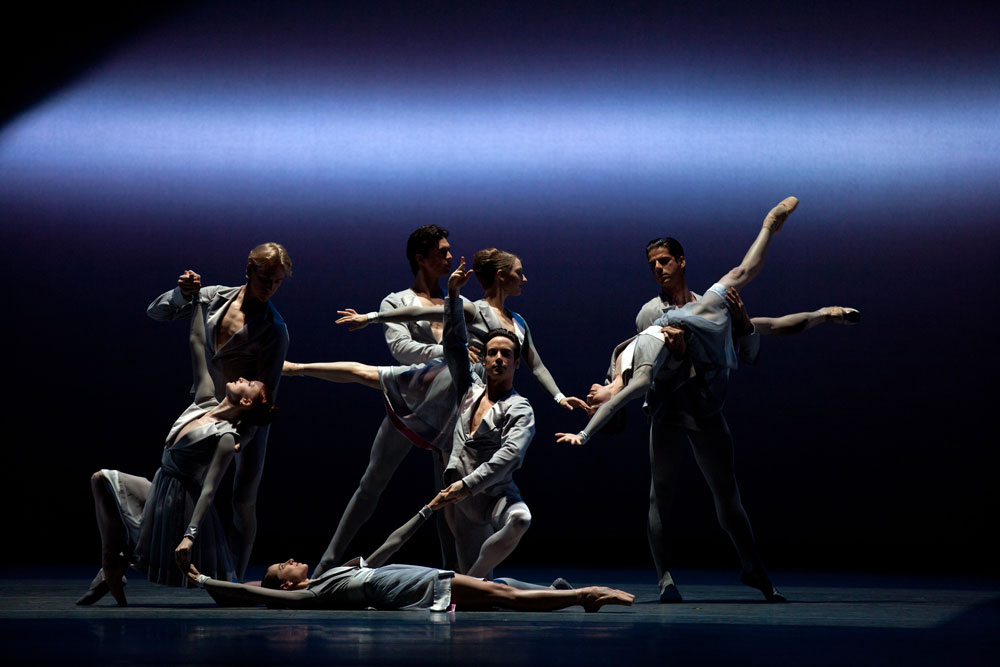
On the same program, the company performed Christopher Wheeldon’s “Thirteen Diversions,” from last year, and Balanchine’s “Apollo,” in its full version (including the birth scene, which the choreographer later cut). “Diversions,” set to Benjamin Britten’s’ “Diversions for Piano and Orchestra,” still looks as handsome and well-crafted as it did last year, but also a bit overblown, with its decorative formations and colored stripes of light. It’s pleasing but ornamental.
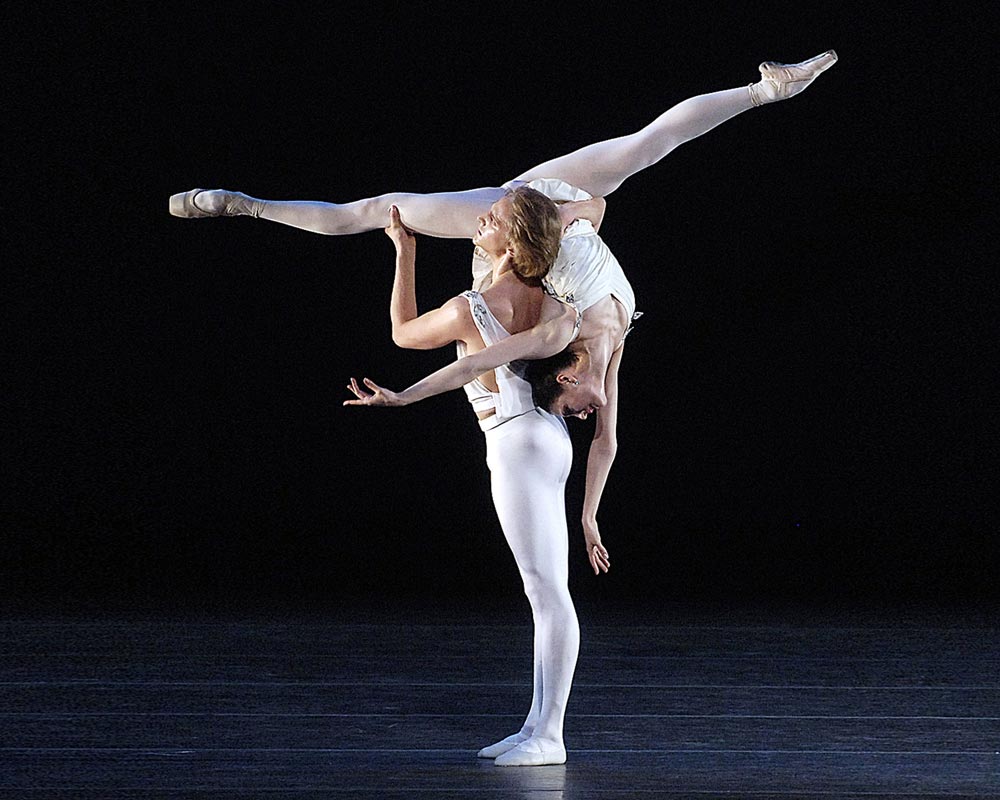
“Apollo,” of course, is a masterpiece, all light and delicacy and experimental ardor. David Hallberg, who had danced the role before, looked less comfortable than I remembered, as if slightly in awe. His Terpsichore was Veronika Part, musical, voluptuous, a little bit too eager to please. Marcelo Gomes, who was dancing the role for the first time, seemed more at ease; he applied his usual ardor and attack to the role, dancing with weight and fullness. He over-interpreted a bit, but then, that’s his way. (Generally speaking, ABT’s staging is over-theatrical, as if the steps shouldn’t be completely trusted to get the point across. The music, too, is played with saccharine smoothness.) Devon Teuscher, débuting as Polyhymnia, delighted with her witty, crisp dancing. She was restrained, without seeming constrained. Polina Semionova was Terpsichore; her ingratiating smile was trumped by her relaxed, playful dancing, and warm, womanly rapport with Gomes. She looked genuinely happy. She is losing the shiny, glamorous aura she had in her first appearances with ABT; maybe she likes it here. Whatever the reason for her glow, I look forward to seeing her in other roles.













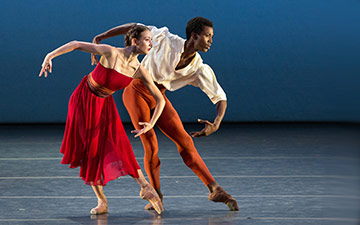
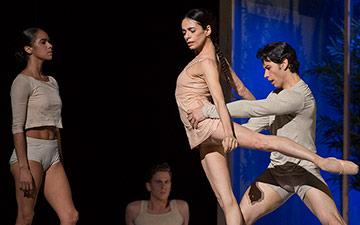

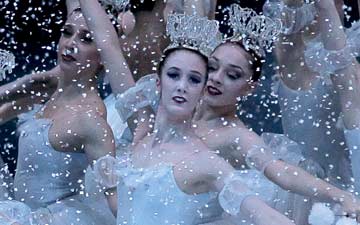
You must be logged in to post a comment.